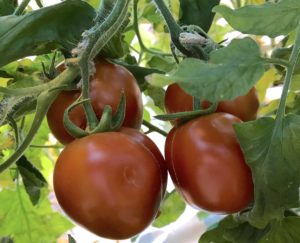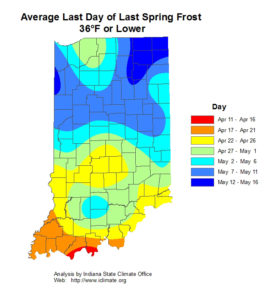Tomatoes Are Tops for Summer Crops

Salad or cocktail-size tomatoes are larger than cherry tomatoes and smaller than slicer tomatoes. Photo by Rosie Lerner, Purdue Extension.
Most gardeners would agree that tomatoes are the most popular crop for home growing. But what gardeners can’t agree on is what tomato is considered “the best,” since taste is such a personal matter.
The diversity of cultivars available makes it easy for anyone to grow tomatoes even if all you have is a pot on the patio. The Burpee Seed Company introduced the first F1 hybrid tomato ‘Big Boy’ in 1949. Since then, plant breeders have introduced thousands of hybrid tomatoes. Modern hybrids bring disease resistance, cold tolerance, nematode resistance, and hybrid vigor as well as a dazzling range of colors, shapes, and sizes.
There are several ways to classify the wide array of tomatoes that are so popular among gardeners today. First, you can group them by fruit size and shape. From small to large, there are: currant, cherry/grape, salad/cocktail, plum, pear, standard slicing, and beefsteak types.
Second, you can group tomatoes by the amount of time it takes for the plants to mature fruit for harvest. Seed packets will list the expected length of time to maturity in number of days, but in general, cultivars are classified as: early, midseason, or late-maturing. Early cultivars take 55 to 65 days from transplanting to the garden. Midseason is considered to be 66 to 80 days. Late types are those that need more than 80 days from transplanting.
Third, you can group tomatoes by the plant’s growth habit: determinate or indeterminate. Determinate plants tend to grow their foliage first, then set flowers that mature into fruit if pollination is successful. All of the fruit tend to ripen on a plant at about the same time. Indeterminate tomatoes start out by growing some foliage, then continue to produce foliage and flowers throughout the gardening season. These plants will tend to have tomato fruit in different stages of maturity at any given time once they start to set fruit.

The average date of last frost (36ºF) in Indiana. Image courtesy of the Indiana State Climate Office at Purdue.
More recent developments in tomato breeding have led to a wider array of fruit colors. In addition to the standard red ripe color, tomatoes can be creamy white, lime green, pink, yellow, golden, orange, purple, or nearly black. The pink and yellowish types have mistakenly been referred to as low-acid tomatoes, but in fact, these types are just higher in sugar, which makes them taste less acidic.
Whichever cultivars you choose to grow, note that all tomatoes are warm-season crops, meaning you should wait until after the date of average last frost in your area before you plant them. Usually, that is mid- to late April in southern Indiana and early to mid-May in northern Indiana. Figure 1 shows the average last date of a light frost (36º F) throughout Indiana.
But soil temperature is just as important. Tomatoes thrive best when soil temperature is at least 60ºF — and soil temperatures are well below that mark so far this spring. Because this year has been slow to warm up, gardeners will need extra patience!